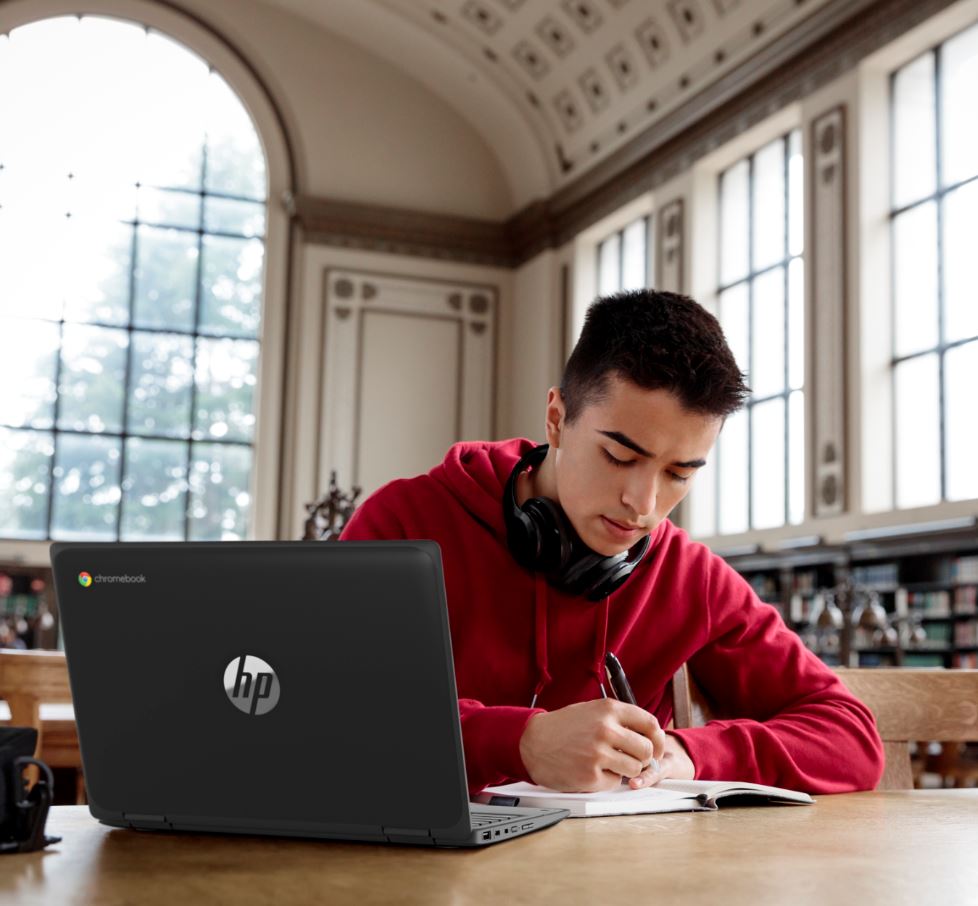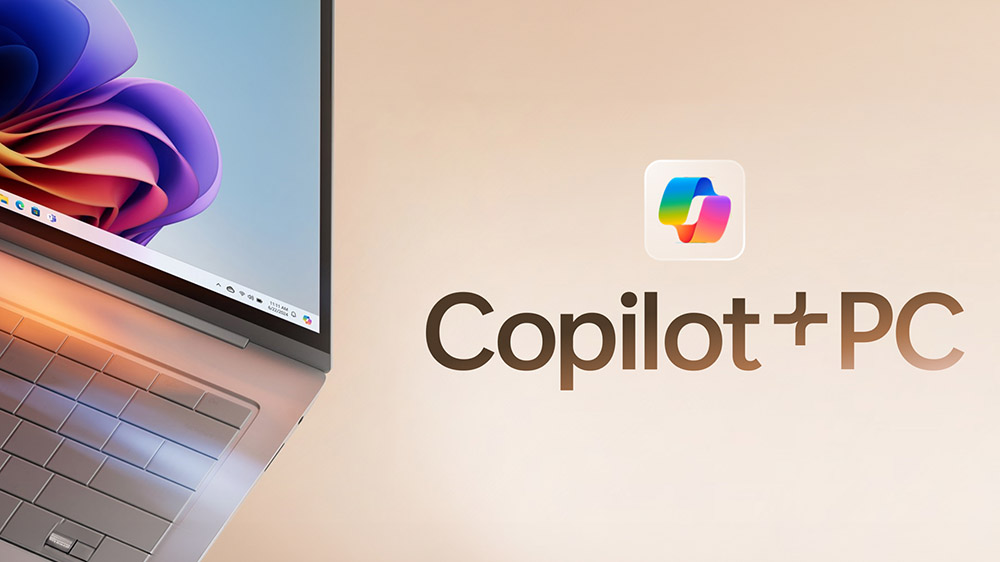HP has introduced five Chromebooks and a Windows laptop for “blended learning” environments that combine classroom and remote instruction.
The hardware giant unveiled all six products in conjunction with the BETTFest 2021 education technology conference, which takes place tomorrow through Friday online.
One of the devices, named the HP Chromebook 14 G7 and scheduled to ship in February, is specifically designed for teachers. Equipped with a wide-angle HD webcam and dual microphones, to enhance virtual instruction sessions, the device comes with a Wi-Fi 6 WLAN module with MU-MIMO and HP Extended Range Wireless LAN to maintain high-speed connections. HDMI and USB-C ports let teachers connect with external displays and projectors, and the unit’s 14-inch display is available in either FD or HD resolutions and with both touch and non-touch panels.
The system supports up to 8 GB of memory and 128 GB of storage. Processing power is provided by an Intel Celeron CPU. The battery is designed to reach 90% of charge capacity in 90 minutes.
To ensure durability, HP says, the system has cleared MIL-STD 810H testing and features a keyboard that can withstand spills up to 11.8 oz. Like all of the devices announced today, it can withstand up to 1,000 disinfection cycles with common household wipes, making it appropriate for classroom as well as home use.
“Teachers need tools and solutions to keep them productive wherever they are and wherever their students are,” says Bill Avey, global head and general manager of HP Education.
Schools can use the new device with a forthcoming cloud-based version of HP’s Classroom Manager solution, which lets teachers remotely control students’ web and app use, check student understanding in real time, and monitor student well-being through private chat.
“Students need technology that improves their engagement, how they collaborate more, and how they connect to maintain social and emotional wellness,” Avey says.
Four Chromebooks for students debuted today as well. The HP Chromebook x360 11 G4 EE features a damage-resistant touchscreen on a 360-degree hinge and a garaged digital pen, as well as an integrated HD camera and optional 8MP auto-focusing “world-facing” camera at the top of the keyboard for use when the display is folded back.
Like the Chromebook 14 G7, the device has undergone MIL-STD 810H testing, and can withstand falls of about 30 inches on concrete, HP says, and of roughly 48 inches on plywood. It comes with a multi-core Intel Celeron processor, up to 8 GB of RAM, and onboard Wi-Fi 6 connectivity. HP plans to ship it in March.
At less than 19 mm in height, the HP Chromebook 11 G9 EE, due next month, is the world’s thinnest rugged Chromebook for education, according to HP, and provides up to 16 hours of battery life. The virtually identical HP Chromebook 11MK G9 EE, which ships later this month, features a MediaTek octo-core processor, instead of its counterpart’s Intel Celeron.
The HP Chromebook x360 11MK G3 EE, also powered by MediaTek processors, comes with a 360-degree display. It’s expected to arrive later this month.
HP announced a Windows-based notebook for students, the ProBook x360 11 G7 EE, last Friday. Due in February, it has a fold-back display, world-facing camera, and Wi-Fi 6 support. The unit runs on an Intel Pentium Silver or Celeron processor and can accommodate up to 8 GB of memory and up to a 256 GB solid-state drive.
Pricing on all of HP’s latest education laptops has yet to be announced.
Distance learning arrangements currently in place across much of the country due to the coronavirus pandemic have imposed severe challenges on students, parents, and teachers. According to an HP research study, nearly 70% of teachers and students feel less connected to each other at present. 66% of teachers expect blended learning to continue after the pandemic.
“If you think about the current world, everybody is struggling, from teachers that do not know from week to week where they will teach from and where will they be teaching for their students, to students that even when well-equipped struggle to stay on track and find themselves distracted at best,” Avey says.
Surging demand for distance learning hardware is one reason global sales of desktops, notebooks, and workstations jumped 13.1% in 2020, according to IDC. Device shipments to teachers and students specifically jumped 46% last year, HP says, citing data from Futuresource Consulting.














